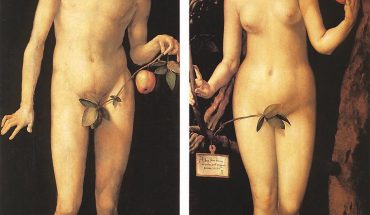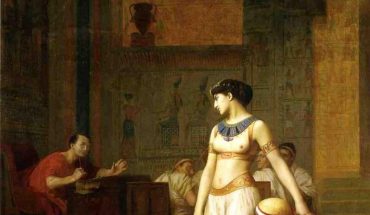Genghis Khan was one of the world’s greatest and most famous rulers.
He was born on the Onon River banks in 1162. His death is believed to have occurred on August 18, 1227. Details are yet to be confirmed. He was the founder of the Mongol Empire, which became the largest contiguous empire of all time. He was a politician and a military genius, and he managed to unite many nomadic tribes under his leadership. Here is a list of the 12 most curious facts about this remarkable Mongolian ruler.
Contents
1. Was his real name Genghis?
The answer to the above question is no; Genghis Khan’s real name was “Temujin”, which means “blacksmith”. Genghis Khan’s title was not given to him until 1206, when he was declared Mongolian leader by the Kurultai Tribal Council. The name Khan was given to reflect his status as a leader, but the actual meaning of the word “Genghis” is still unclear. Some historians think it means “supreme ruler” or “universal”.
2. Are there any pictures or photos of him?
Searching for Genghis Khan – HISTORY You may have seen some of his pictures on the internet or in books, but these are not actual depictions of him. There are no records that exactly describe his appearance, so historians know very little about his physical appearance. The reason is that none of his sculptures has survived. However, according to many historians and writers, he was a tall and strong man with long hair and a beard and with a great personality. The most curious description of Genghis Khan has come from historian Rashid al-Din who clearly stated that he had green eyes and red hair. What is amazing about this description is that he never met the great ruler yet confidently claimed to know so much about him.
3. He practised religious tolerance.
It is an astonishing fact that sets him apart from many other former rulers. Many other rulers maintained a strict religious bias, but Genghis Khan did not. He granted religious freedom in all of his territories, and on a personal level, the great Khan was very spiritual. He always prayed in his tent before major campaigns and met with leaders of different religions to discuss the common interest of their kingdoms and beliefs. His tolerance was seen as politically motivated, as he believed that a satisfied kingdom would be less likely to stage a rebellion.
4. A mysterious death It remains a mystery when and exactly how Genghis Khan’s great reign ended.
Some sources claim he died in 1227 from a fall from a horse, while other sources deny the fact. A source claims his death was due to malaria, and the guessing game surrounding his death continues to this day. His tomb is located near a Mongolian mountain but bears no inscription.
5. A difficult childhood From the start, Genghis Khan had to face many challenges in life.
His father was poisoned and killed when he was only nine years old. Her tribe left her mother alone to raise her seven children without any support. He spent his childhood hunting for survival, and there are reports that he killed his own brother in an argument over food. Genghis Khan endured many hardships – including slavery – before becoming a great ruler, and his immense bravery got him through many of those ups and downs. After coming to power, he began to form alliances with other tribes and build his empire. By 1206 he had established himself as a capable leader, and his conquests continued.
6. His generals were his former enemies.
Khan was a great talent scout and could easily identify any skilled or experienced man to become one of his officers. There is a compelling story about one of his enemies who tried to kill Khan in battle but narrowly missed his mark. At the end of the battle, Khan addressed the enemy troops, the Taijutsu tribe, and asked who had tried to kill him. A man bravely stood up and admitted the attack. Genghis later offered this soldier a very respectable post as an officer in his army. The soldier was nicknamed the “arrow” after the weapon he had used in an attempt to kill Khan.
7. He was not afraid of the destruction.
Mongolian battle under Genghis Khan It is said that Khan always gave his opponent the opportunity to surrender first to Mongol rule, but he did not hesitate to attack those who hesitated. An example of this is the case of the Khwarezmid Empire, which did not accept the terms of Mongol rule and broke a treaty. In retaliation, Khan mobilized his army with one goal: to destroy the Khwarezmid Empire at all costs. Initially, Khan offered the king a trade deal, but Khan’s emissaries were assassinated.
This only fueled his rage, and he launched an all-out attack on the Khwarezmid kingdom in Persia. A great war ensued in which many Persians lost their lives. He did not stop after destroying the kingdom of Khwarezmid. He had other scores to settle. As part of his attack on the Persian kingdom, he asked for the support of Tangut troops from the western region of Xia in China. They refused, and Genghis ordered the execution of the royal family as a punishment for their disloyalty.
8. Responsible for millions of deaths.
The exact number of deaths for which Genghis Khan was responsible is rather difficult to determine, but some historians claim that the number is around 40 million people, or about three-quarters of the current population of Iran. Many of these deaths took place during the war with the Khwarezmid Empire. Statisticians say the death toll may have reduced the world’s population by nearly 11%. Despite his great contributions as a ruler, the enormous loss of life during his reign will always cast a shadow over his reign.
9. The first international postal system
Genghis Khan was the very first person to create an international postal system to improve his communication network. He introduced the “Yam” service, which used mounted couriers to deliver mail. The couriers were fast, and with breaks of a few kilometres, they could cover up to 200 miles a day. This incredible system turned out to be Khan’s eyes and ears, and he could get all the information he needed just by sitting down on his throne. The whole system was so well designed that the transfer of goods became far too easy. Yam could follow political and military matters and also establish contacts with spies for the kingdom. He also provided security during visits by foreign dignitaries. This technology, which was first created and used by Khan, was also used by the famous explorer Marco Polo.
10. A great tactician.
Mongols / Genghis Khan | Guerrieri, Giubbe rosse, Napoleonic WarGenghis Khan was a skilled tactician, and his reign was very organized and stable. His army used spy networks to detect and ward off any threats to their power. Genghis Khan is widely considered to have built a great and strong Mongolia through his superb vision and military genius.
11. Justice was his main concern.
Genghis Khan was well known for his sense of justice among the Mongols. He had a unique perspective and way of seeing things that set him apart from the intellectuals of the day. He was loyal to his kingdom in every way he could, but his sense of justice was not limited only to the kingdom. He also applied it to his own sons. In order to avoid any further conflict or war between them, he ensured that after his death, the empire was divided equally among them. Through his vision and wisdom, he made his way into the hearts of millions of people in his kingdom.
12. Soviet attempts to eradicate its heritage.
Genghis Khan has become a national hero, being the greatest king of the Mongol Empire. He is also considered a father figure to Mongolia, having greatly advanced their nation. But the Soviets who came to power in the 20th century tried to eradicate Genghis Khan’s name from the history books, seeing his legacy as a great threat to their leadership. They forbade people to say his name, and in an effort to erase all traces of him, the Soviets removed him from all school books and texts.
They didn’t stop there: they also banned people from making pilgrimages to his birthplace. But that’s no longer the case. When the Mongols regained their independence in the 1990s. They restored Genghis Khan to his name as the greatest ruler in their illustrious history. Since then, Khan has been widely represented in art and Popular Culture, and the country’s central airport bears his name. Even today, Mongolia’s currency bears his image. The people revere his great ruler in all respects, without reference to his bloodthirsty reputation.
Conclusion
Khan was undoubtedly a great ruler, but the many deaths he caused cannot be ignored. While it has enabled Mongolia to flourish in terms of wealth, Culture and religion, he was also responsible for the deaths of nearly 40 million people during his reign. He represents the two sides of a coin that are in permanent opposition: on the one hand, he was an exemplary leader and one of the greatest leaders in the history of the world, but on the other. He exhibited brutality and evil never seen before. However, thanks to his leadership skills. he will always be immortalized as one of the world’s greatest leaders, especially in the hearts and minds of the Mongolian people.




